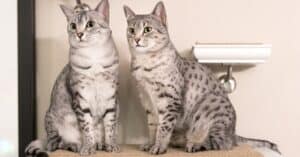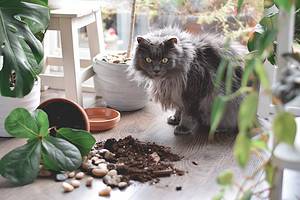Key Points:
- The idea that a cat’s human-equivalent age can be determined by multiplying its actual age by seven is a myth.
- A commonly accepted way of converting a cat’s age to human years is to add 15 years for its first year, 10 years for the second, and four years for each following year.
- Lifestyle factors, such as living indoors or outdoors, can have an impact on how a cat ages.
- Understanding your cat’s stage of life is important for proper care and communication with your veterinarian.
True or false: One year of a cat’s life is the equivalent of seven human years.
Take a second…
Many believe this myth to be a fact. It’s been generally applied to both cats and dogs. The theory’s been commonly passed around for who knows how long. The belief is the “one year to seven-year” ratio came about to demonstrate our believed housepets age at a much faster rate than humans do.
The truth is our felines age much faster than even the rumor implies.
So, what’s the best way to accurately determine how old your cat is in relation to human years?
Read on.
Cats
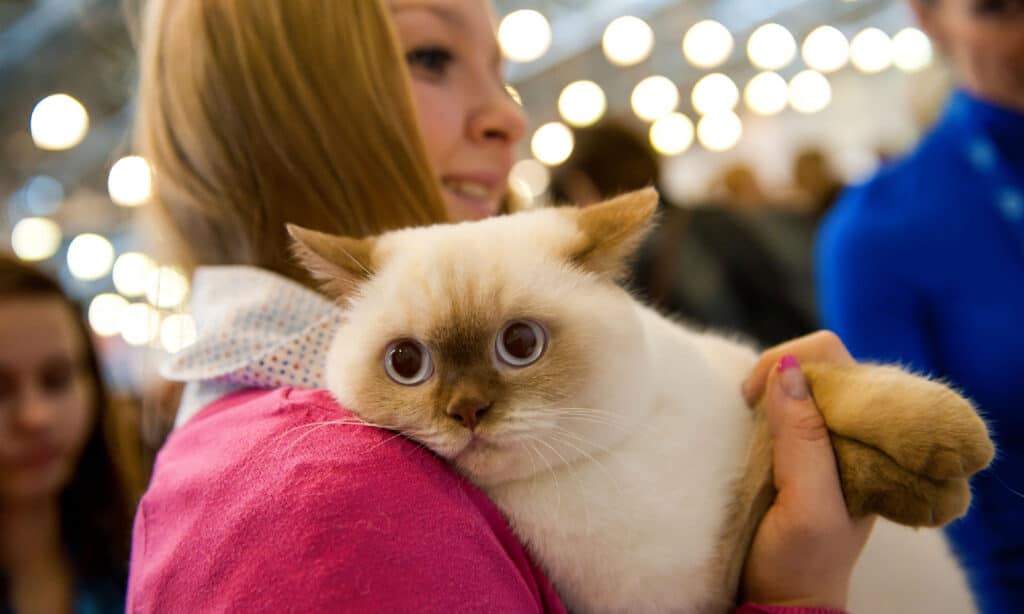
Cats are one of the most popular animals in the world.
©iStock.com/toxawww
Cats are second to dogs on the list of most popular animals in the world. They’re domesticated members of the cat family and its smallest member. As felids, domestic cats have low-slung, supple bodies, long tails that help maintain balance, finely molded heads, and specialized claws and teeth useful in hunting.
Like their cousins the lion and tigers, domesticated cats are essentially carnivorous. And as any tabby owner knows, they are remarkably agile, tend to be powerful, and extraordinarily coordinated as they move and jump about.
Numero uno — the dog — lived in packs before domestication. The dog readily adapted to being a domesticated pet. The cat was not so easily subjugated. House cats are self-reliant and loners. They’re curious, brave creatures and easily find themselves in trouble. But they’re hard to stay mad at. No matter what risk they take, you’re too relieved to get your ire up.
Cats are beautiful and intelligent. Their purrs of happiness are candy to many cat owners. They don’t require the maintenance of other animals, especially dogs. You can leave them home alone as long as they have access to food and water. A companion — a dog or another pussycat — might be appreciated by kitty, but they don’t panic or get anxious when left alone.
When you get home, they’ll run up, purring and rubbing your shins. And not just because they know a meal’s coming soon.
Cats ingratiate themselves into your life, becoming beloved family members.
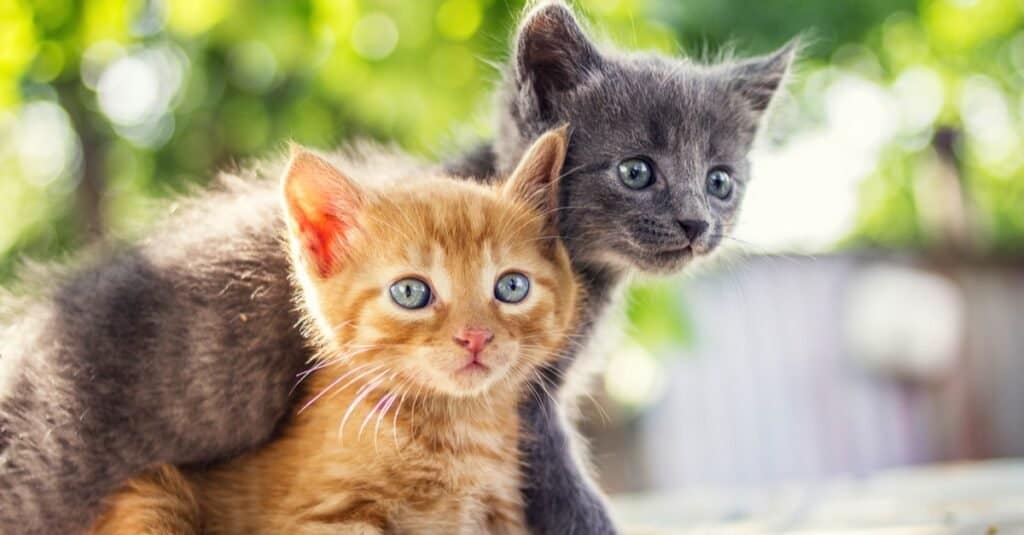
©CebotariN/Shutterstock.com
Is Knowing Your Cat’s Age Important?
Felines live longer than dogs. On average, your kitty can live between 20 and 25 years. This means that it’s very important to keep the big picture in mind when you acquire a new feline companion. Cat caretakers should also consider the impact of major life events, such as moving or adding a member to the household.
Knowing if your pet is approaching its senior years is critical to knowing how to care for it. We consider canines to be mature or senior at seven years while cats are mature — middle-aged — between seven to 10. The cat becomes senior in its 11th year. They’re senior until they turn 15, after which they’re categorized as “geriatric.”
The animal’s age greatly influences their weight and diet as well as how often they should get regular check-ups. The vet will be instrumental in ensuring the best chances of your kitty living a healthy life.
It might make sense to get pet insurance before your cat gets too old. Like humans, older cats will get expected illnesses or have unexpected accidents. You won’t regret planning ahead as your pet reaches its golden years!
Cat to Human Age Chart
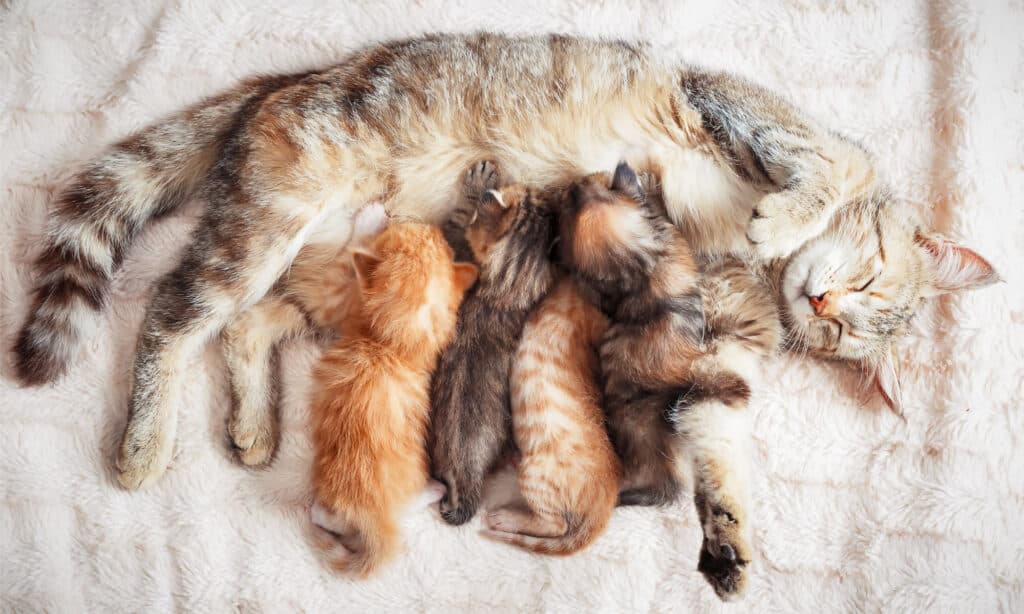
To calculate a cat’s age in human years add 15 years for its first year, 10 years for the second, and four years for each following year.
©iStock.com/bozhdb
Converting cat to human years isn’t as simple as using seven human years to every one cat year. Mostly because kitties mature faster in their first years of life compared to both humans and dogs.
The accepted practice is to add 15 years to the cat’s first year. You add 10 years to the second year. From that point on, it’s four years of human life for every animal year. Using the calculation, you’ll find your cat is mature by two years, the equivalent of a human a quarter-century old.
| Stage | Cat Age | In Human Years |
|---|---|---|
| Kitten | 1 month | 1 year |
| 3 months | 4 years | |
| 6 months | 10 years | |
| Junior | 12 months | 15 years |
| 18 months | 21 years | |
| 3 months | 4 years | |
| 2 years | 24 years | |
| Adult | 3 or more years | 28 years and four years for each additional cat year |
| Senior | 11 to 14 years | 60 and four years for each additional cat year |
| Geriatric | 15 years and older | 82 years and four years for each additional cat year |
How Cats Age
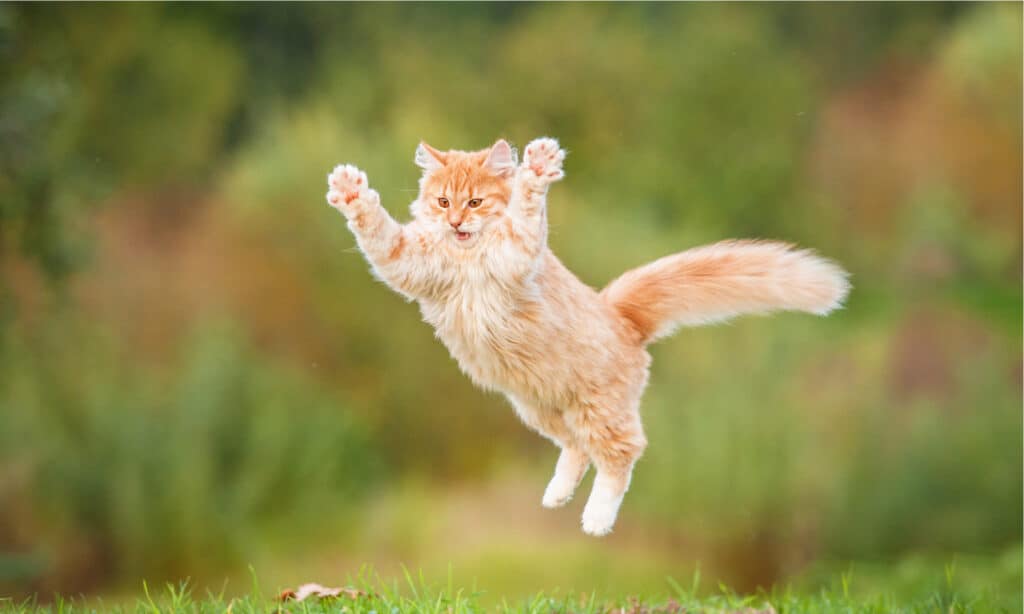
The feline goes through the equivalent of many human years during the first two years of life
©Rita_Kochmarjova/Shutterstock.com
As stated, the common one year to seven is misleading. The feline goes through the equivalent of many human years during the first two years of life. The aging process will slow down for a while before beginning steady aging.
The cat-to-human aging calculation derives from the behavioral and physical changes that occur at different stages of your cat’s life. Said stages match up to those found in the patterns of human life.
Experienced kitten caretakers already know to prepare for rapid change. Over the first eight weeks of its life, a kitten will need help gradually transitioning from milk only to solid food. This is also the time to make sure your young feline has received all necessary vaccinations.
The aging theory operates under the concept that at one year of age, the kitty is physiologically akin to a 15-year-old human. Studies show that relatively at these points in their lifespans, the human and the cat are at a close stage of development and growth.
Cats, dogs, and humans will show variations in the way they age. But cats typically show less variation in the way they age among the breeds. Dog years (like humans) can differentiate among breeds. For instance, smaller dog breeds tend to live longer. But you can’t use this concept with tabbies. It seems regardless of breeds, the variations aren’t significant enough when it comes to aging. Cat breeds seem to follow very similar patterns as they grow older.
Indoor vs. Outdoor Cats

©Fazlyeva Kamilla/Shutterstock.com
It may sound strange but where your pet stays indoors, outdoors, or dabbles in both can play a role in how they age. While it’s a debatable topic in the animal kingdom, there is reportedly reliable rationale data on both sides of the argument.
Animals that remain indoors don’t expose themselves to the trauma or infectious diseases that can result from running around outdoors. That may result in longer lifespans. But the other side argues indoor felines are at greater risk of illness to environmental limitations.
The exact opposite applies to outdoor felines. They may have stronger immune systems by engaging in stimulating, natural, new environments. But they also increase the potential for stress, trauma, and disease as they explore the unknown.
Owners, knowing the signs of aging and their cat’s lifestyle, will be able to better decide how to manage their pet as they age.
Signs of a Senior Cat
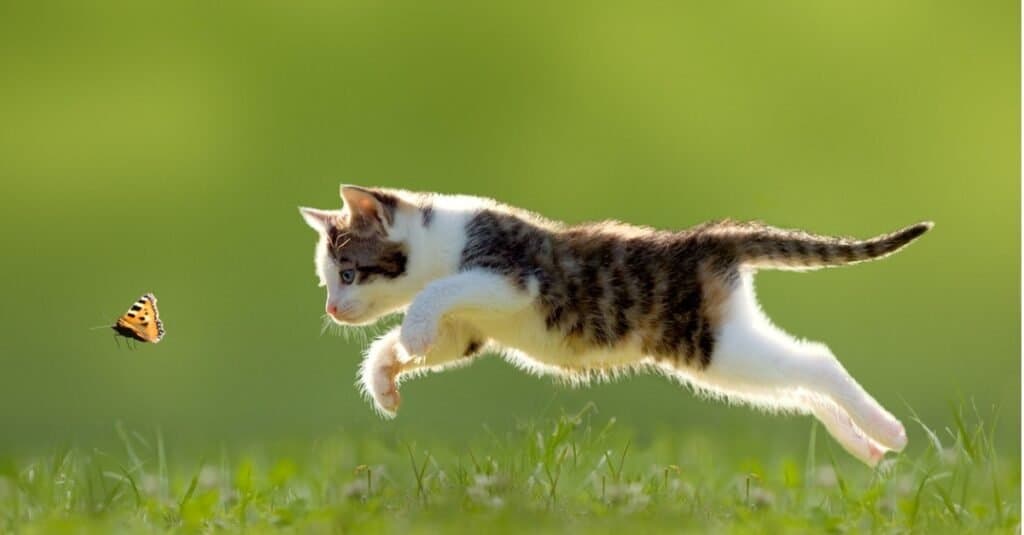
A young cat hunting a butterfly in a meadow. Domesticated cats are very effective at hunting for rats and other pests, making them one of the deadliest cats.
©iStock.com/Leoba
There are distinctive physical indicators to help you get an idea of your animal’s age. This is especially true as your adult kitty reaches that senior phase.
- The teeth will yellow and develop tartar build-up. The cat will also start losing teeth. If all teeth are clearly stained, the cat is probably three to five years of age. Missing teeth indicate the cat’s a respectable 10 to 15 years old. You should keep in mind your feline may just have bad teeth!
- Older animals get thicker and coarser and start to gray. Soft and fine fur is for the young, like full heads of hair!
- Eyes are a useful resource for figuring out your cat’s age. The eyes may display cloudiness, discharge or tearing. There may be a distinctive crackly look to the iris as opposed to a natural smoothness. That can distinguish a young cat (smooth) from a senior (crackly). After 12, there is usually cloudiness. Tearing is a sign of maturity.
- Arthritis is common among older cats but only regular checkups will reveal the condition. In fact, most signs of age are near hidden so it’ll be up to you to pay attention. Like humans, activity levels impact muscle definition. Kitties playing, running and jumping are common in youngsters. If your pet’s muscle mass is diminishing or it’s moving around significantly less, you’re looking at an older animal. Seniors will be bonier, have protruding shoulder blades or hanging skin.
- The pet will show muscle or weight loss, getting bonier.
- Even your most laid-back feline will show signs of diminishing energy.
- Behavior changes may include wandering, more meowing, disorientation or confusion.
- Older kitties can seem to forget where the litter box is.
World’s Oldest Cat
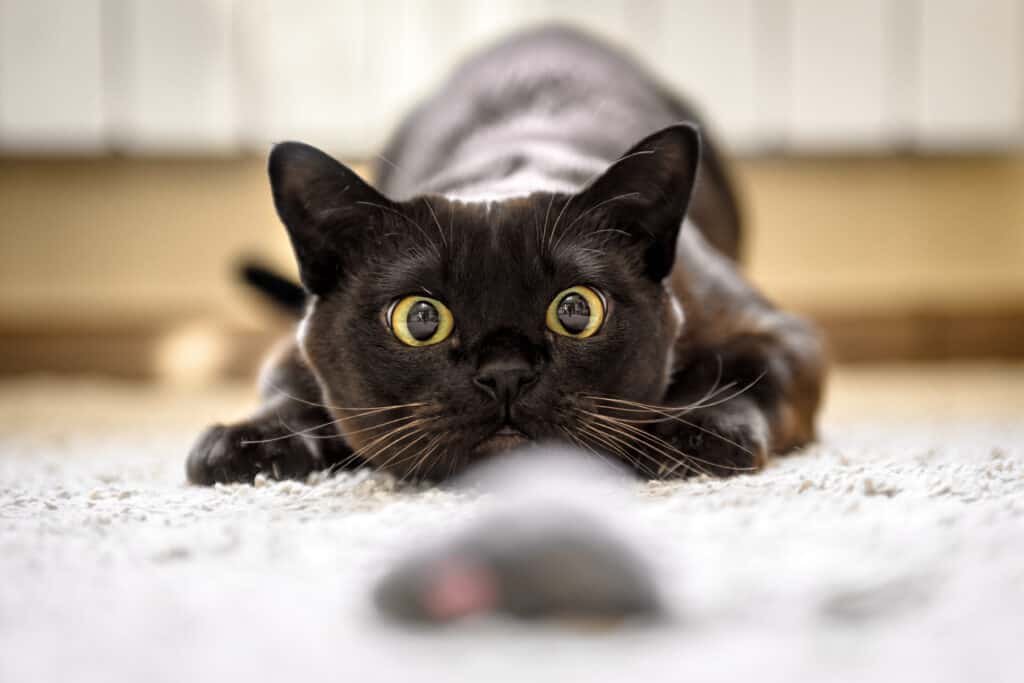
If your cat is treating your hand like a mouse, it might be a good idea to get him a toy to chew on instead.
©Viacheslav Lopatin/Shutterstock.com
There are plenty of stories about the world’s oldest kitty. We went to the most reliable resource for record-keeping. The Guinness Book of World Records lists the oldest cat at 38 years and 3 days. That’s 168 in human years. His name was Creme Puff. Born on August 3, 1967, Creme Puff died on August 6, 2005. His owner, Jake Perry, lived in Austin, Texas. Curiously, Perry also owned Granpa Rex Allen, another feline holder of — at that time — the oldest living tabby.
Up Next…
Now that you are up to speed on how cats age, there is more to explore! Keep building your animal knowledge by checking out these fascinating, fact-filled articles:
- The 8 Best Books About Cats for Curious Owners – Available Today – Deepen your kitty caretaker knowledge with these eight great reads!
- Can cats see in the dark, like night vision? – Just how powerful are your cat’s eyes? Click here to learn what they can see and what they can’t!
- 12 Animals That Lay Eggs (Some Will Surprise You!) – Oviparous animals come in all shapes and sizes. Learn about these 12 creatures that use eggs to reproduce.
The photo featured at the top of this post is © Aleksei Verhovski/Shutterstock.com
Thank you for reading! Have some feedback for us? Contact the AZ Animals editorial team.




